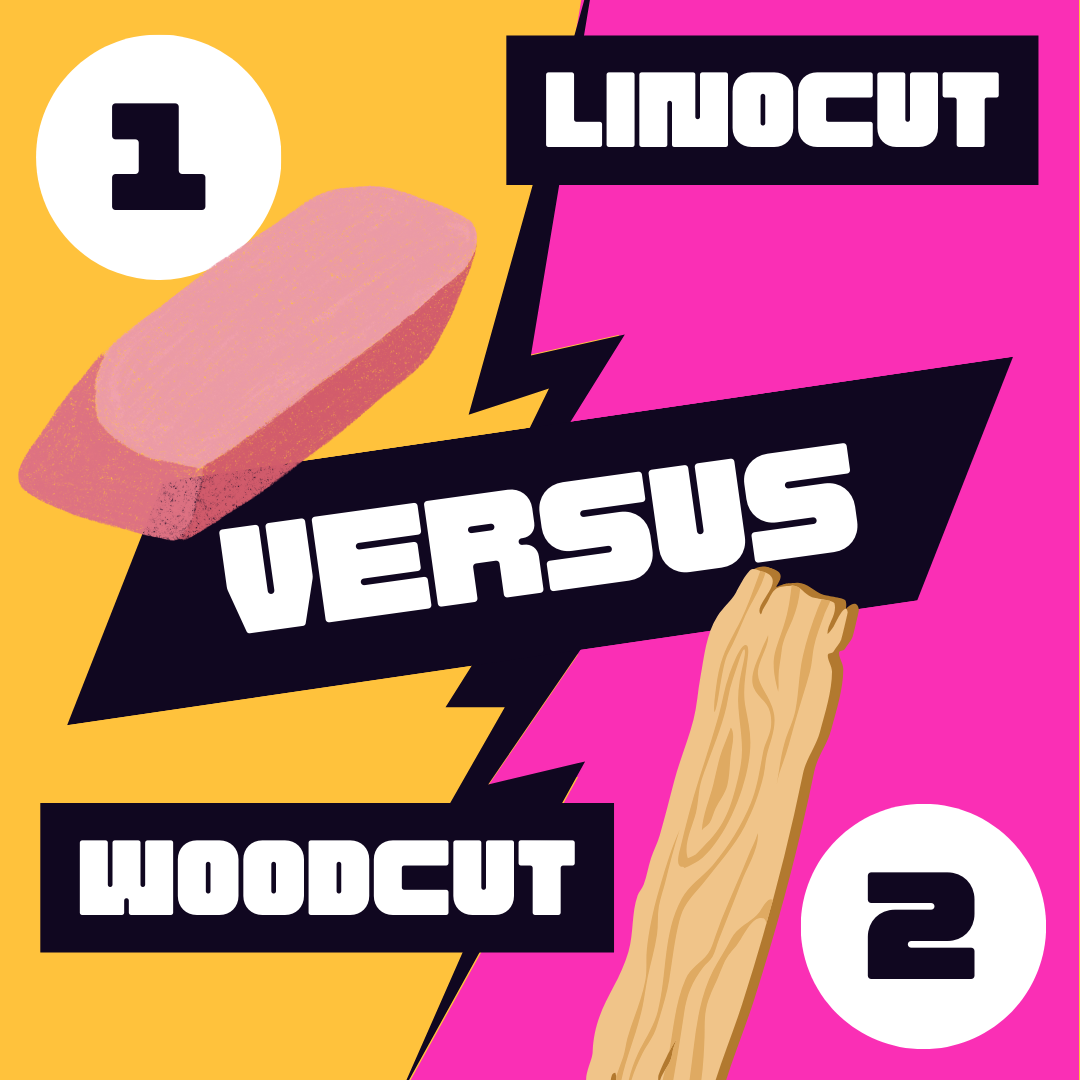This page has affiliate links to products I have tried and recommend, see my disclosures.
There are a lot of block printing mediums but the two main ones are wood and linoleum. Block printing has been traced back to 206 BCE when the first known woodcut print was made on silk in the Han Dynasty. Linoleum was invented long after that. The first artists to try linoleum cutting were German Expressionists and Russian Constructivists sometime around the year 1905.
While the history of woodcut printing gives it some gravitas in the fine art community, linoleum has a painterly look and has it’s own merits.
Woodcut or linocut, which is best for a beginner?
Having recently taken to both mediums, I’ve been thinking about which is best for a beginner. I’ll admit I started as a beginner with linoleum blocks. Then first block I tried was the Speedball Speedy Carve Block that comes in the beginner printmaking kits they offer at many craft stores. The kit also comes with a multi-head linocut tool, ink, and a brayer. It’s actually a perfect kit for a beginner and I was very attracted to the price (I paid around $30 for mine) versus the beginner kits for acrylic paints which retail around $50-$60.
But there are pros and cons to both. Here are the main ones in my opinion:
Linocut
Pros:
- Easy to Carve – Linocut comes in a range of thickness, but compared to wood, it is far easier to carve
- Various sizes – You will be able to but the size you want for your project. They also sell rolls of the grey linoleum “battleship” variety if you plan on doing a lot of projects
- Fun to “sketch” ideas – Because of how smooth it is to carve, I find linoleum is a fun way to try out new ideas. Especially the Speedy Carve or similar pink blocks that are the cheapest form of the medium. It’s easy to try a pattern or cut before applying it to a larger work and see how it prints.
Cons
- Price is Higher – This may be a moot point because wood has gone up in price recently. I like to work big and definitely the price of wood blocks can be significantly cheaper than linoleum.
- Squishy – Linoleum that is not “mounted” to wood can be too squishy for using a roller press or even hand pressing. The ink can blot or the block will move with too much pressure making it harder to get a “clean” print. Sometimes the effect is nice though
- Varying materials – If you’re a bargain shopper, you may find that the blocks are very different by brand, making it harder to learn the medium consistently.
Woodcut
Pros:
- It’s more fun – This is one artist’s opinion, but wood is just more fun to carve. It is surprising as you work with it. The grain means you have to work with the piece in front of you.
- History – Woodcut printmaking is traditional art. People who enjoy art know the amount of work and time invested in woodcut prints. Comparing it to painting, there are lots of acrylic paintings that sell by the top artists in the world, but oil paintings are still seen as much better by some art aficionados simply because it is a more traditional medium.
- Tools – Both linocut and woodcut can use the same tools, you will find more tools for woodcutting like chisels that might help your art go in another direction.
- Printing is easier – I never worry that the pressure I’m putting on the woodblock will cause the block to squish.
Cons:
- It’s tough – Wood is not a smooth cutting surface. There’s always going to be resistance, even with the smoothest kind of woodblock. There are lots of varieties of wood so depending on your price range you will be able to get easier cutting boards, but because it’s a natural surface there will always be “tough spots”.
- It makes a larger mess – Maybe this is too picky, but I think wood makes a larger mess, I find myself getting sawdust from some of my cuts. Linoleum doesn’t cause as much mess (note: still pretty messy)
- Harder to clean – Again this is my opinion, because wood and water are not always friends, cleaning the ink off your woodblock can take a lot more effort.
- Cutting can be frustrating – Until you find the type of wood you like to use, you might be trying different varieties. Now and then things will splinter on boards you’re not familiar with and that can be a frustrating learning process. This especially happens if you’re not paying attention to the wood grain.
Hopefully this list helps you out deciding a medium. Have you tried one or both? Let me know your favorite in the comments!
